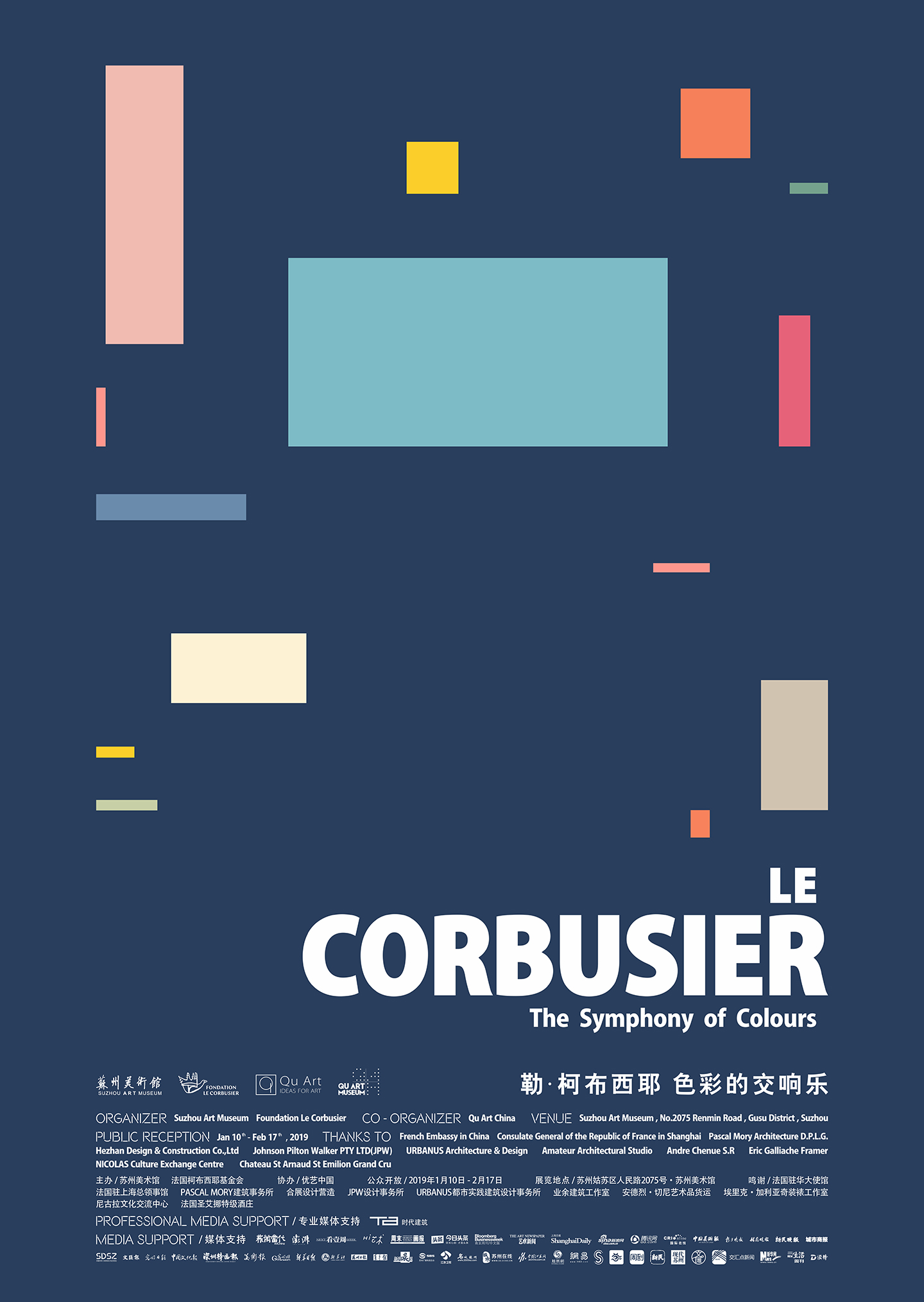Le Corbusier, The Symphony of Colours – Exhibition
As many of his counterparts, Mr. Ieoh Ming Pei, the architect who designed the Suzhou Art Museum where the exhibition ‘Le Corbusier, The Symphony of Colours’ is shown until February 17, was enlightened by Le Corbusier. “I still remember Le Corbusier’s arrival at MIT, and the two days with him are the two most important days during the course of my architectural education”, he recalls.
French-Swiss architect Charles Edouard Jeannert-Gris (1887-1965, pen name Le Corbusier) – who was not professionally trained in architecture – was not only an architect who built hundreds of buildings across five continent, he also designed an entire city (Chandigarh, India), completed 400 oil paintings, created 50 sculptures, wrote more than 80 books and magazines and designed more than 100 pieces of furniture, becoming a well-deserved master of creation in the 20th century.
This exhibition, which has collected more than 200 original works by Le Corbusier, takes the public on a journey through the 60 years of creative career of a generation of architects, presenting a new perspective, that is, the main axis of Le Corbusier’s creation: color. This exhibition presents 10 masterpieces, such as the Villa Savoye in Poissy, France, Cité Radieuse in Marseille, and the famous La Chapelle de Ronchamp. In addition, Le Corbusier’s interdisciplinary art works, paintings, sculptures, enamel decorations and books are unveiled in this exhibition.
Le Corbusier is so unique that his work tends to blend with the grey of concrete, but some differences appear when looking more closely at his work. Le Corbusier’s use of color from his work in school to the last batch of buildings he built has been very exquisite. In order to make the space have texture and become vivid, he perfectly controlled the color integration and coordination. This exhibition takes the visitor into the different creative periods of Le Corbusier to explore their different color combinations: The Purism in the 1920s and 1930s, The Brutalism in the 1940s and 1950s, and The Lyrical and Bright in the 1960s.
In China too, Le Corbusier has had a great impact on several generations of architects and designers as well as on the theory and the production of the City, some of his masterpieces being studied, shown, reinterpreted and celebrated across the country.
Date: from January 10 to February 17, 2019
Venue: Suzhou Art Museum, No.2075 Renmin Road, Gusu District, Suzhou (the exhibition will then go to Tianjin)
Organizers: Suzhou Art Museum, Foundation Le Corbusier; co-organizer: Qu Art China
See full program and useful links (in Chinese): https://mp.weixin.qq.com/s/gD-LjvybXzhaj1EFFLWJrg and https://mp.weixin.qq.com/s/nFO0LtoCbP6yDlCwFPzwyQ
EVENT DETAILS
Date:
January 10, 2019 to February 17, 2019Exhibition
-
2019/01/10 - 2019/02/17

-
Suzhou

-
Qu Art China



